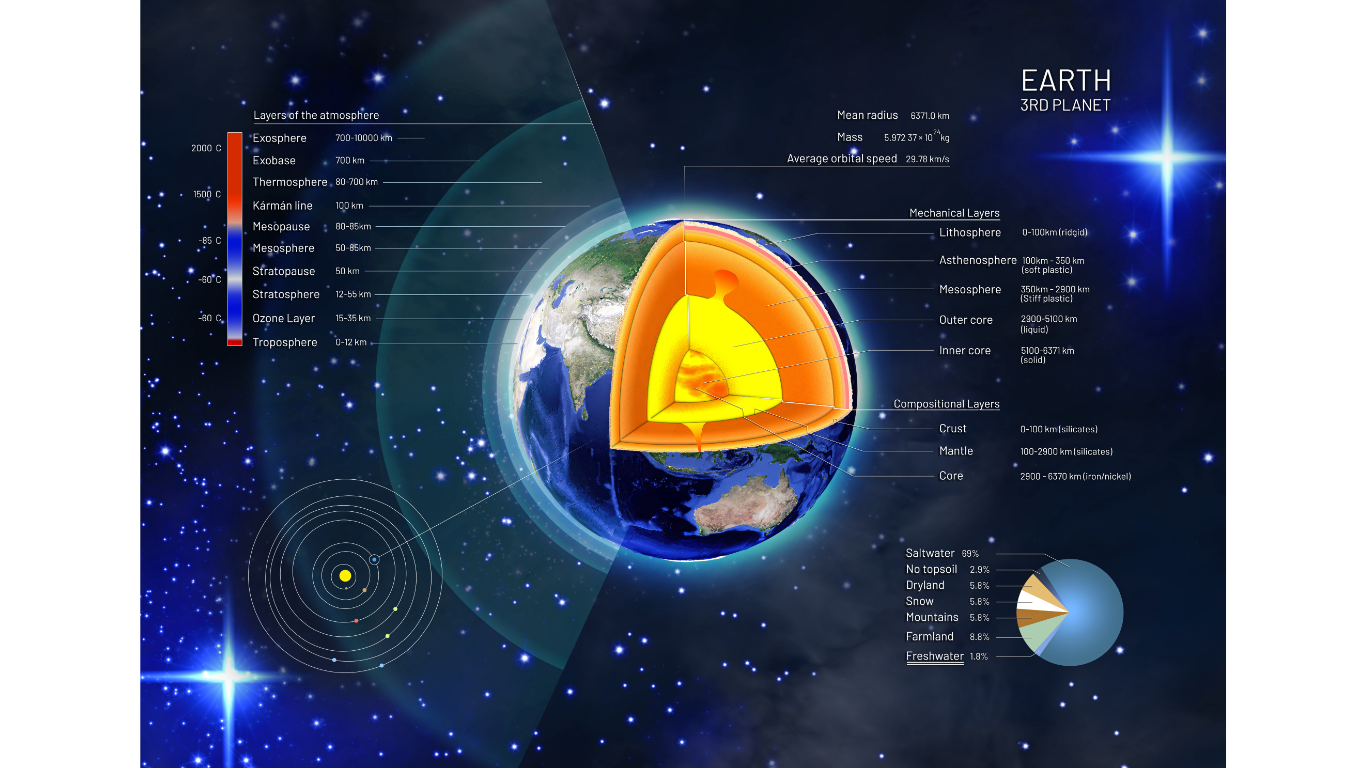Temperature is a fundamental aspect of our atmosphere, influencing weather patterns, climate dynamics, and the very habitability of our planet. The atmosphere, a complex system of gases surrounding Earth, undergoes constant fluctuations in temperature due to various factors, including solar radiation, greenhouse gas concentrations, atmospheric circulation patterns, and surface interactions. Understanding these dynamics is crucial for comprehending climate change and its impacts on our environment.
Factors Influencing Atmospheric Temperature:
Solar Radiation: The primary source of energy for Earth’s atmosphere is solar radiation. Sunlight warms the Earth’s surface, and some of this heat is absorbed and re-radiated back into the atmosphere. The amount of solar energy received varies with latitude, season, and time of day, leading to temperature variations across the globe.
Greenhouse Gases: Certain gases, such as carbon dioxide (CO2), methane (CH4), and water vapor (H2O), trap heat in the atmosphere, creating a natural greenhouse effect. Human activities, such as burning fossil fuels and deforestation, have significantly increased the concentration of these greenhouse gases, intensifying the greenhouse effect and contributing to global warming.
Atmospheric Circulation: The movement of air masses and circulation patterns, such as Hadley, Ferrel, and Polar cells, plays a crucial role in redistributing heat across the globe. Warm air rises near the equator, moves towards the poles, cools, and then sinks back towards the surface. This circulation redistributes heat and moisture, influencing regional climates.
Surface Interactions: Landmasses, oceans, ice caps, and vegetation all interact with incoming solar radiation and affect atmospheric temperature. For example, land surfaces heat up and cool down more quickly than oceans, leading to temperature contrasts between continents and oceans.
Variability in Atmospheric Temperature:
Diurnal Variation: On a daily timescale, atmospheric temperature typically follows a diurnal cycle, with temperatures rising during the day as the sun heats the surface and falling at night as the Earth loses heat to space.
Seasonal Variation: Seasonal changes in temperature are driven by the tilt of Earth’s axis relative to its orbit around the sun. This tilt causes variations in the angle and intensity of sunlight received at different latitudes, resulting in summer and winter seasons.
Spatial Variation: Temperature varies geographically due to differences in latitude, altitude, proximity to oceans, and surface characteristics. For example, equatorial regions generally experience warmer temperatures than polar regions due to the angle of solar radiation.
Long-term Trends: Over decades and centuries, atmospheric temperature trends reflect broader climatic changes. Historical records and scientific data show that global temperatures have been rising steadily since the Industrial Revolution, primarily due to human activities increasing greenhouse gas concentrations in the atmosphere.
Impacts of Changing Atmospheric Temperature:
Weather Patterns: Changes in atmospheric temperature influence weather patterns, leading to more frequent and intense heatwaves, storms, and precipitation events. These shifts can disrupt ecosystems, agriculture, infrastructure, and human health.
Glacial Melting and Sea Level Rise: Rising temperatures accelerate the melting of glaciers and ice caps, contributing to sea level rise. This phenomenon threatens coastal communities and ecosystems, increasing the risk of flooding and erosion.
Ecological Disruption: Temperature changes can disrupt ecosystems by altering habitat ranges, species distributions, migration patterns, and the timing of biological events such as flowering and hibernation. This can lead to biodiversity loss and ecosystem instability.
Social and Economic Impacts: The consequences of changing atmospheric temperature extend to socioeconomic domains, affecting agriculture, water resources, energy demand, public health, and geopolitical dynamics. Vulnerable communities, particularly in low-income countries, are disproportionately affected by these impacts.
Conclusion:
Atmospheric temperature is a critical component of Earth’s climate system, shaped by a complex interplay of natural processes and human activities. Understanding the factors driving temperature variability and the consequences of changing temperatures is essential for mitigating the impacts of climate change and building resilience to its effects. Through scientific research, responsible policy-making, and collective action, we can address the challenges posed by rising atmospheric temperatures and work towards a sustainable future for generations to come.


